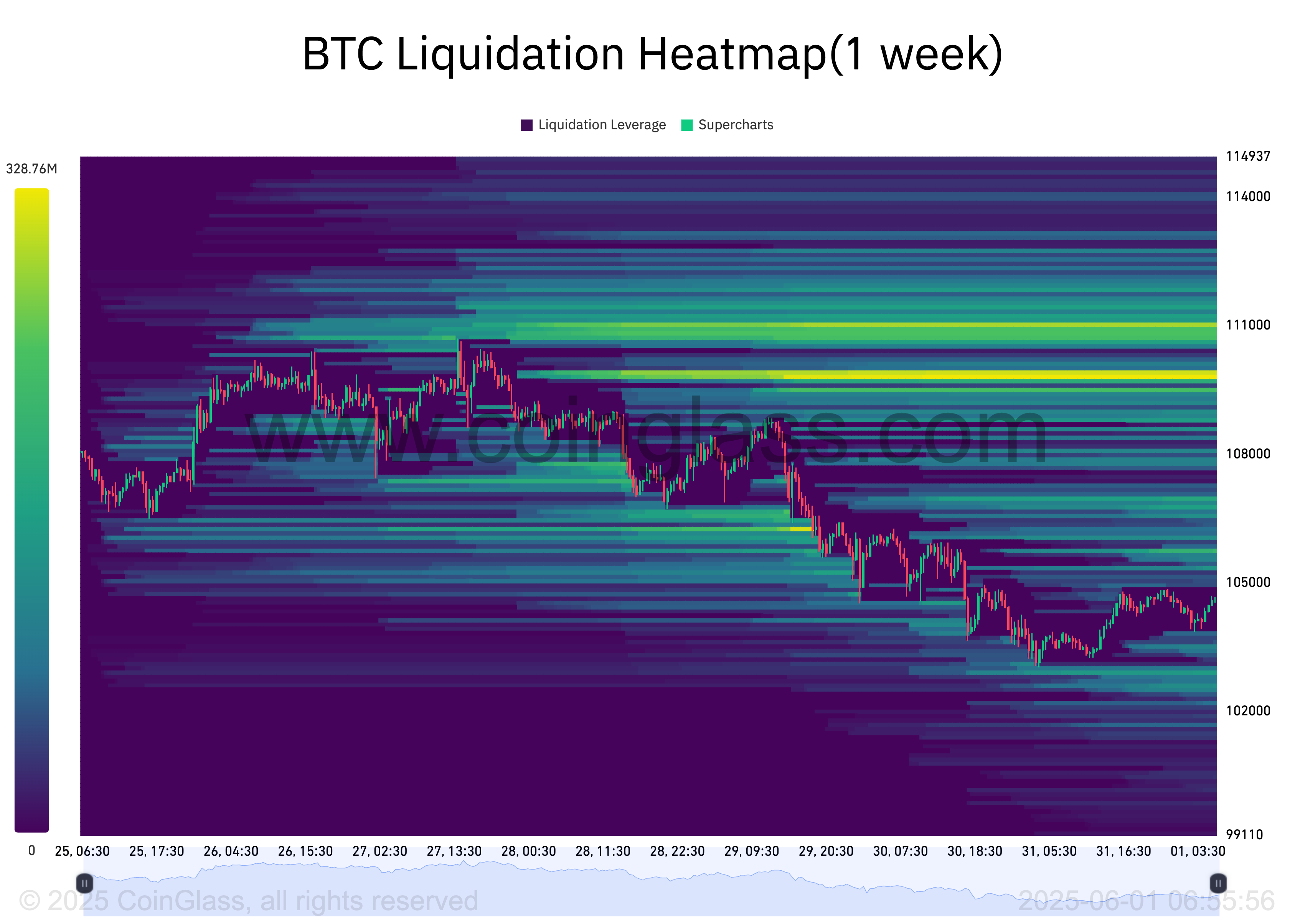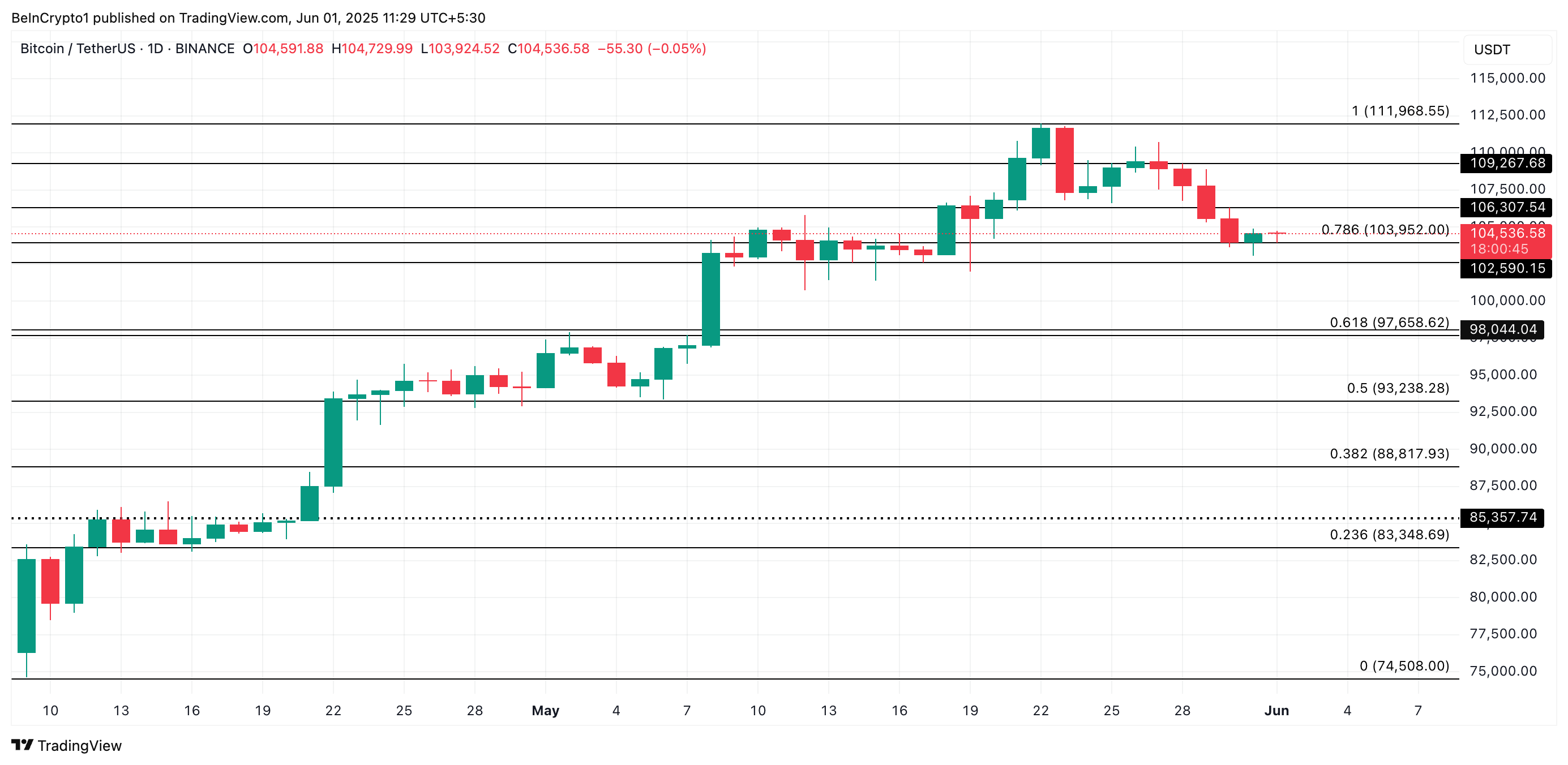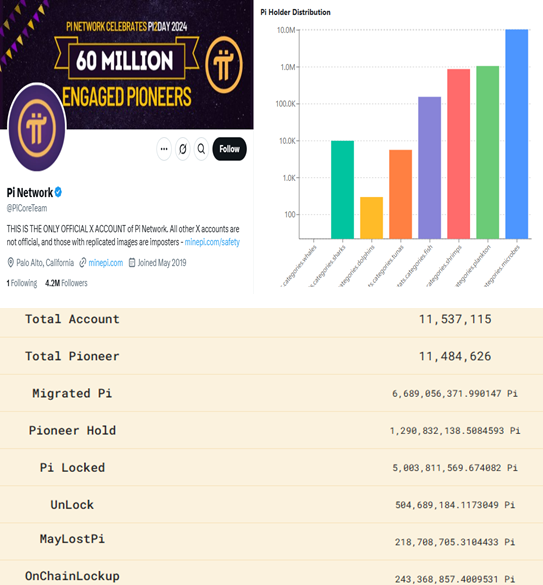Leading coin Bitcoin has been in a corrective phase since hitting its all-time high of $111,968 on May 22. The king coin has slipped below the key $105,000 support level to trade at $104,536 at press time, reflecting the selling pressure.
However, on-chain data suggests a potential rebound above this critical support level, with a possible retest of BTC’s all-time high on the horizon. This analysis breaks down the key insights.
BTC Liquidity Clusters Signal Surge Toward $109,000
An assessment of BTC’s liquidation heatmap shows a notable concentration of liquidity around the $109,933 price zone.

Liquidation heatmaps identify price levels where large clusters of leveraged positions are likely to be liquidated. These maps highlight areas of high liquidity, often color-coded to show intensity, with brighter zones (yellow) representing larger liquidation potential.
Usually, these cluster zones act as magnets for price action, as the market tends to move toward these areas to trigger liquidations and open fresh positions.
Therefore, for BTC, the convergence of a high volume of liquidity at the $109,933 price level indicates a strong trader interest in buying or closing short positions at that price. It creates room for a surge toward the $109,000 mark.
Further, the coin’s funding rate has remained positive despite its recent price pullback. At press time, this stands at 0.005%, per Coinglass.

The funding rate is a periodic payment between traders in perpetual futures contracts to keep the contract price aligned with the spot price. When the funding rate is positive, there is a higher demand for long positions.
This means more traders continue to bet on BTC’s price going up, even in the face of strengthening bearish momentum.
BTC Price Teeters Between $103,000 Support and $109,000 Liquidity Zone
BTC has posted a modest 1% gain in the past 24 hours, bouncing off the $103,952 support level. If demand soars, this support floor could hold firm and push prices above the psychological barrier at $105,000, potentially targeting $106,307.
A clean break above this zone may open the door to the $109,000 price area dense with leveraged positions.

However, increased profit-taking could drag BTC back below $103,952, with a further decline toward $102,590 likely.
The post Bitcoin Liquidation Data Shows Price Could Bounce Back to $109,000 appeared first on BeInCrypto.







 FRANCE PROMISES SECURITY BOOST FOR CRYPTO ENTREPRENEURS
FRANCE PROMISES SECURITY BOOST FOR CRYPTO ENTREPRENEURS